Crafting Keys from Moldy Bread for That *Organic* Feel
Tired of boring plastic keycaps? Want something that will biodegrade right on your desk? Let's make some keycaps out of bread. This guide shows you how to turn flour, water, and some wild yeast into functional (and edible-ish) parts for your mechanical keyboard.
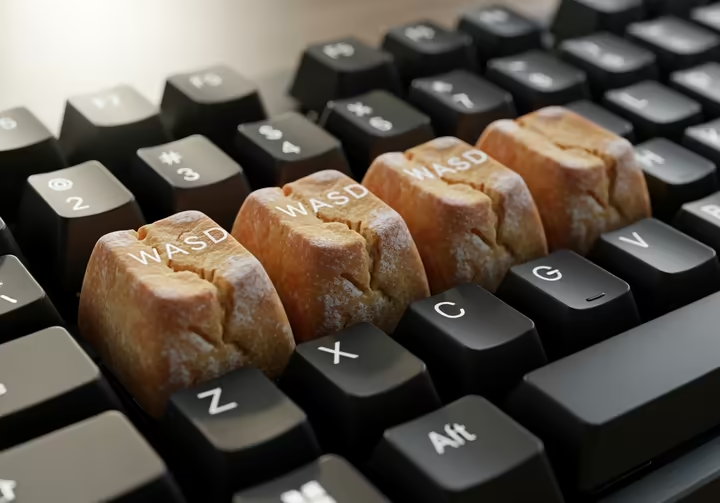
Why Make Keycaps Out of Bread?
The whole point is to make something that doesn't last forever. Standard keycaps are made of plastic that will outlive you, your children, and maybe civilization itself. A bread keycap has a short, beautiful life, which forces you to take care of it... and eventually, make a new one.
It's less about owning a static object and more about looking after a living, changing thing. It’s a keyboard you have to feed and water (sort of).
Plastic is Boring (and Lasts Forever)
Most keycaps are made from two types of plastic, Acrylonitrile Butadiene Styrene (ABS) or Polybutylene Terephthalate (PBT). ABS is smooth but gets a greasy "shine" over time from your fingers. PBT is tougher, has a textured finish, and resists that shine.
Both are great from a mechanical standpoint, but they're terrible from an environmental one. They take centuries to break down, adding to a huge pile of electronic waste. They’re monuments to a throwaway culture.
The bread keycap's short lifespan, maybe a few weeks or months, is a feature, not a bug. It makes you a custodian of your gear, not just a consumer. When it dies, it just returns to the dirt it came from.
Dough: A Living Plastic
We’re not just using any bread dough. The key is a sourdough starter, a living colony of wild yeasts and bacteria. This isn't sterile, factory-made plastic, each starter has its own unique character based on the microbes in it.
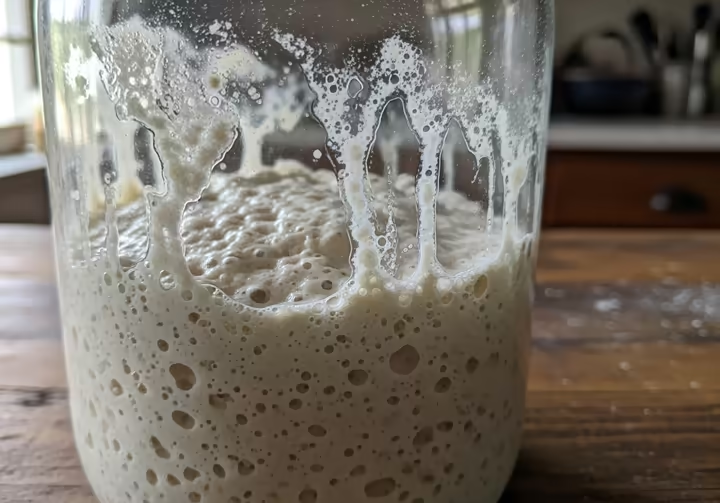
The byproducts from these tiny organisms, like carbon dioxide and various acids, are what determine the keycap's final structure, hardness, and even its smell. The bubbles create the sound profile, and the acids add strength and preserve it from bad mold. A bread keycap isn't just made, it’s cultivated.
A keycap can even act as a weird, living data log. It changes based on the humidity, temperature, and microbes in its environment (and on your hands). A used-up keycap could theoretically tell a story about where it's been.
A Deeper Connection... to Your Keyboard
Making your interface out of the same stuff that you eat dissolves the line between the biological and the technological. The keycap’s life cycle doesn’t just end. Watching it age, and eventually composting it, changes your role from a simple user to a participant in a natural cycle.
Picking Your Dough Ingredients
To make a good keycap, you have to think of dough as an engineering material. Flour, water, and microbes aren't just for cooking, they're the building blocks for a squishy, porous, and surprisingly tough component.
Wheat Flour: The Stretchy Stuff
The main structure in a wheat keycap comes from gluten. When you add water to flour, two proteins (glutenin and gliadin) link up to form a stretchy, elastic net. This net traps the gas from your sourdough starter, giving the keycap its shape and springy feel.
You have to use high-protein bread flour (12-14% protein). It creates a much stronger gluten net, which you need for the thin walls and tiny stem mount of a keycap. Don't even think about using cake flour, your keycaps will just crumble.
A good trick is the autolyse . Just mix your flour and water and let it sit for 20-60 minutes before adding anything else. This lets the flour fully hydrate and starts forming the gluten network all by itself, saving you some kneading later.
Rye Flour: For a Deeper Sound
For a different feel and sound, you can use rye flour. Rye doesn't have much gluten, its structure comes from a gooey, sticky group of carbohydrates called pentosans. When you add water, they form a thick gel that holds everything together.
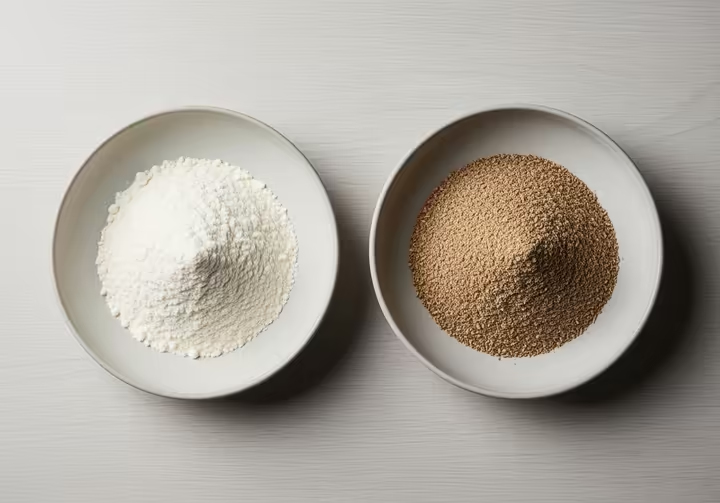
Rye’s secret weapon is its ability to absorb a ton of water, way more than wheat. This makes the final keycap much denser and heavier. This density is great at damping sound, giving you a deep, muted "thock" that many keyboard fans love.
The extra water also means rye keycaps go stale much slower than wheat ones. That gives them a longer useful lifespan before they get too brittle and crack.
| Flour Cheat Sheet | ||
|---|---|---|
| Flour Type | Protein Content (%) | Best For... |
| High-Gluten Bread Flour | 12.5-14.5 | Strong, rigid keycaps with a "crisp" sound. Good for spacebars and other high-impact keys. |
| Dark Rye Flour | ~9.6-16 | Deep, "thocky" sound and a longer lifespan. Makes a dense, heavy keycap. |
| Medium Rye Flour | ~9.6 | A good middle ground. Decent sound damping with a bit more structure than dark rye. |
| Whole Wheat Flour | 11.5-14.4 | A balanced keycap with a rustic look. The little bran bits get in the way of gluten, making it a bit weaker but texturally interesting. |
Your Secret Ingredient: Sourdough Starter
The magic comes from a sourdough starter, a living ecosystem of wild yeasts and bacteria. Your job is to manage this little zoo to get the results you want. The yeasts eat sugar and produce carbon dioxide gas, which creates the bubbles (or "crumb") that define the keycap's sound.
The bacteria, mostly Lactobacillus species, also eat sugar but produce lactic and acetic acids. These acids do two things, they strengthen the gluten network and they act as a natural preservative, protecting your keycap from bad mold.
You can control the sourness and hardness by changing the starter's environment. Cooler, drier starters produce more acetic acid (vinegary), while warmer, wetter starters make more lactic acid (yogurty). You're basically programming the material's properties at a microbial level.
Making the Keycaps
Turning a blob of living dough into a precise keyboard part requires a clear process. This is where baking meets manufacturing.
Kneading and Rising
You need to develop the dough's internal structure. For normal wheat doughs, use the "Slap and Fold" method, where you literally slap the dough on the counter and fold it over itself to build strength quickly. For wetter doughs like rye, the gentler "Rubaud" method (scooping and stretching in the bowl) is better.
After kneading comes the bulk fermentation , or first rise. This is when the yeast and bacteria get to work. During this 4-8 hour period, you'll perform a few "stretches and folds" to build more strength and even out the temperature.
For a stronger and more flavorful keycap, try a cold fermentation. Just pop the dough in the fridge for 12-24 hours. This slows everything down and gives enzymes more time to work their magic.
Shaping the Keycap
This is the hardest part. First, you divide the dough into perfectly weighed pieces for each keycap. Then you gently preshape each piece into a little ball and let it rest for 15-30 minutes. This "bench rest" lets the gluten relax so you can shape it without tearing.
The most critical step is molding the cruciform stem mount on the underside. You'll need a custom, non-stick mold that matches a Cherry MX-style switch stem perfectly. You have to press the dough firmly around the mold, making sure there are no air gaps, or the keycap will be wobbly.
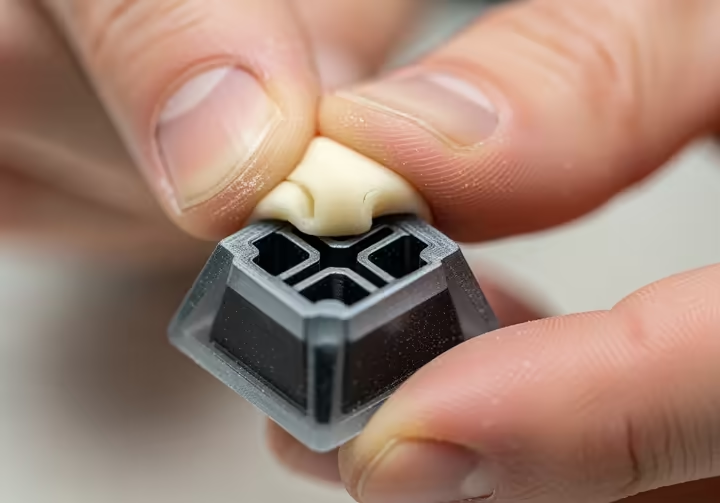
With the stem formed, shape the keycap body into your desired profile (like Cherry, SA, etc.). The goal is to create a tight "skin" over the surface by folding and tucking the dough. This tension is what helps the keycap hold its shape when it puffs up in the oven.
Baking Your Keycaps
Baking is what turns the soft dough into a hard, durable part. Start with a very hot oven (230-240°C). This initial blast of heat causes oven spring , a rapid puff-up as the yeast gives one last gasp and the water inside turns to steam.
To get the best oven spring, you need a humid environment for the first 10-15 minutes. Throwing some ice cubes in a hot pan at the bottom of the oven works well. The steam keeps the surface of the dough soft and stretchy so it can expand without cracking.
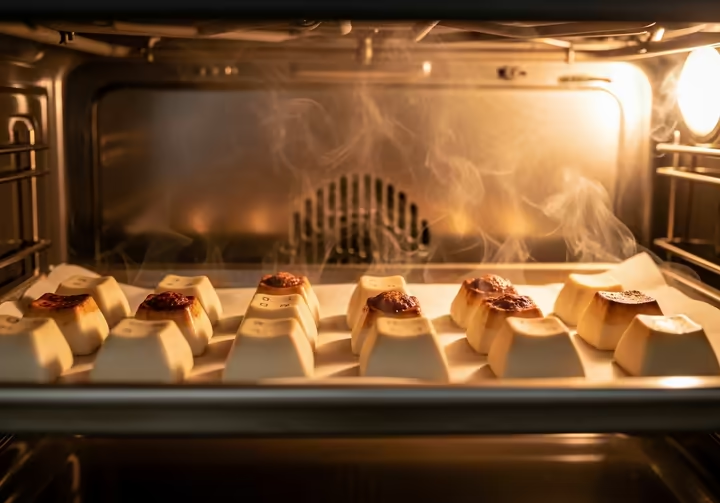
After the puff-up, you bake it until the surface browns and hardens. This crust is the keycap's main wear surface, like the textured finish on a PBT plastic keycap.
Finishing Touches
Don't use them right out of the oven! Your new keycaps need to cure in the open air for at least 24 hours, and 48-72 is even better. This lets them dry out completely, making them harder, denser, and more stable.
To protect them from moisture (from the air and your fingers), you need to apply a food-safe sealant. Shellac gives you a hard, glossy, water-resistant film, kind of like an ABS keycap. For a more natural, matte feel, use a penetrating oil like Tung oil, which hardens the bread from the inside out.
How Do They Feel and Sound?
Typing on bread is... different. The feel and sound are unique, and you can tailor them based on the ingredients you choose.
Typing on Bread
Plastic keycaps are predictable. ABS is smooth and makes a high-pitched "clack." PBT is textured and makes a deeper "thock." Bread keycaps can be either, or something else entirely.
The sound comes from the crumb profile , the network of bubbles inside. Wheat keycaps have big, irregular bubbles ("open crumb") and produce a resonant, higher-frequency sound, a "crisp crunch." Denser rye keycaps have tiny, uniform bubbles ("dense crumb") that damp sound, resulting in a muted, low-frequency "thud."
| Keycap Showdown: Bread vs. Plastic | |||
|---|---|---|---|
| Material | Texture | Sound Profile | How It Dies |
| Wheat-Gluten Bread | Natural crust, or glossy with shellac. | "Crisp Crunch" (higher-pitched) | Goes stale, gets brittle, gets moldy. |
| Rye-Pentosaccharide Bread | Dense, matte crust. | "Muted Thud" (deep, thocky) | Goes stale (slowly), gets moldy. |
| ABS Plastic | Smooth, gets shiny. | "High-Pitch Clack" (thin, sharp) | Stem breaks, gets brittle from UV light. |
| PBT Plastic | Textured, matte. | "Low-Pitch Thock" (deep, solid) | Basically immortal. Maybe the stem breaks. |
How They Age (and Die)
A bread keycap is designed to fail gracefully. Plastic keycaps "shine," but bread keycaps go stale . The starch molecules inside slowly crystallize, pushing out water and making the keycap harder and more brittle over time.
Eventually, one of two things will happen. Either it will crack from the stress of typing, or it will get eaten. The main villain is Rhizopus stolonifer , common black bread mold, whose tiny filaments will invade the keycap and digest it from the inside out.
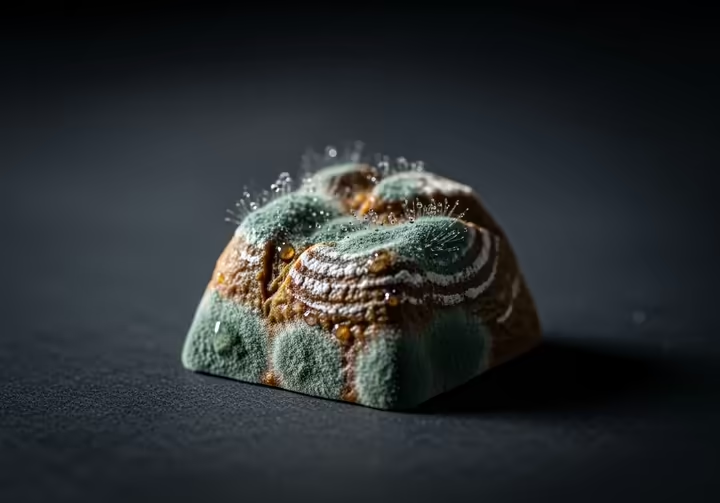
For advanced users, this decay can become an aesthetic feature. You can deliberately introduce a friendly, non-toxic mold like Penicillium roqueforti (the blue cheese stuff). This allows you to cultivate a beautiful, ever-changing pattern of blue-green veins, a "living finish" impossible to get with plastic.
Keeping Them Clean (and Bug-Free)
You can't just wash these. Use a soft brush for dust. If they get dirty, use a cloth that's barely damp with a bit of alcohol, and dry it immediately. You'll also need to reapply your sealant every few months to keep them protected.
Your keyboard is now a potential food source, especially for ants. To protect it, disrupt their scent trails by wiping down your desk with a 50/50 vinegar-water solution.
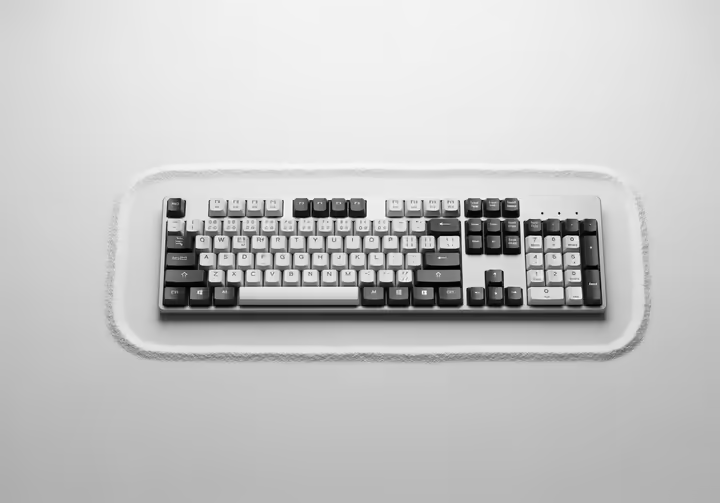
For a serious defense, create a border around your keyboard with food-grade Diatomaceous Earth (DE). It's a fine powder made of fossilized algae that feels soft to us, but it’s like microscopic glass shards to bugs. It scratches up their exoskeletons and causes them to dehydrate and die, a brutally effective, non-toxic barrier.
The End of the Road
When a keycap finally cracks or gets overrun by mold, its journey isn't over. Don't throw it in the trash.
Returning to the Earth
The best way to dispose of a dead keycap is to compost it. Break it into small pieces to help it break down faster and toss it in your compost bin. Microbes in the soil will happily devour it, returning its nutrients to the earth and completing the cycle.
Can You... Eat Them?
It’s a fair question. They're made of food, right? But the answer is a firm no. By the time a keycap is done, it's stale and rock-hard.
More importantly, it's covered in a sealant that isn't meant to be eaten in large amounts. And finally, it's likely been colonized by whatever random molds were floating around your house. So please, don't eat your used keycaps.
Works cited
- www.thekapco.com, https://www.thekapco.com/blogs/article/guide-to-keycap-profile-material#:~:text=ABS%20and%20PBT%20are%20two,a%20greasy%20shine%20over%20time.
- ABS vs. PBT Keycaps: Keycap Materials You Should Know ..., https://www.keychron.com/blogs/news/abs-vs-pbt-keycaps-keycap-materials-you-should-know
- ABS vs PBT vs Ceramic: Which Gaming Keycap Material is More Durable?, https://dev.to/mysticcoder/abs-vs-pbt-vs-ceramic-which-gaming-keycap-material-is-more-durable-3n0i
- Understanding Keycap Materials: ABS, PBT, and POM - Ranked, https://ranked.gg/blogs/news/understanding-keycap-materials-abs-pbt-and-pom
- The Sourdough Microbiome - American Society for Microbiology, https://asm.org/articles/2020/june/the-sourdough-microbiome
- How Does Sourdough Starter Work? [science of sourdough] - The Pantry Mama, https://www.pantrymama.com/how-does-sourdough-starter-work/
- How microbial diversity makes every sourdough different | PBS News, https://www.pbs.org/newshour/science/how-microbial-diversity-makes-every-sourdough-different
- Influences of Ingredients and Bakers on the Bacteria and Fungi in Sourdough Starters and Bread | mSphere - ASM Journals - American Society for Microbiology, https://journals.asm.org/doi/10.1128/msphere.00950-19
- Microbial secrets of sourdough - ASBMB, https://www.asbmb.org/asbmb-today/science/082220/microbial-secrets-of-sourdough
- Moldy bread is cool - Cornell Mushroom Blog, https://blog.mycology.cornell.edu/2011/05/19/moldy-bread-is-cool/
- Rhizopus stolonifer - Wikipedia, https://en.wikipedia.org/wiki/Rhizopus_stolonifer
- Gluten: How Does It Work? - Modernist Cuisine, https://modernistcuisine.com/mcah/gluten-how-does-it-work/
- What Is Gluten? | BeyondCeliac.org, https://www.beyondceliac.org/gluten-free-diet/what-is-gluten/
- The Science Behind Sourdough | yoursourdoughstart.com, https://yoursourdoughstart.com/science-of-sourdough-bread/
- Recent Advances in the Study of Wheat Protein and Other Food Components Affecting the Gluten Network and the Properties of Noodles - PMC - PubMed Central, https://pmc.ncbi.nlm.nih.gov/articles/PMC9738829/
- Chemical structure of gluten | Miller Magazine, https://millermagazine.com/blog/chemical-structure-of-gluten-5601
- High Gluten Flour: Nutrients, Uses, and Comparison - Healthline, https://www.healthline.com/nutrition/high-gluten-flour
- The Best Flour for Sourdough Starters: An Investigation - Serious Eats, https://www.seriouseats.com/the-best-flour-for-sourdough-starters-an-investigation
- Ultimate Guide on Bread Making Terminology - Wessex Mill, https://wessexmill.co.uk/bread-making-terminology/
- Sourdough Baking Glossary - The Clever Carrot, https://www.theclevercarrot.com/2019/03/sourdough-baking-glossary/
- Rye Flour – Understanding Ingredients for the Canadian Baker, https://opentextbc.ca/ingredients/chapter/rye-flour/
- How Rye Works - Modernist Cuisine, https://modernistcuisine.com/mb/how-rye-works/
- Learn your keycaps: A guide to keycap profile and material - The KapCo, https://www.thekapco.com/blogs/article/guide-to-keycap-profile-material
- Sourdough Starter Fermentation Explained: How Wild Yeast and Bacteria Work Together, https://www.summitsourdough.com/blogs/information-and-process-5/science-of-sourdough-fermentation
- Kneading Technique Roundup - Bread Magazine, https://bread-magazine.com/kneading-technique-roundup/
- How to Knead, Fold, and Shape Sourdough Bread - Serious Eats, https://www.seriouseats.com/sourdough-how-to
- Explain bulk fermentation like I'm stupid, because I am : r/Sourdough - Reddit, https://www.reddit.com/r/Sourdough/comments/1fp9ppi/explain_bulk_fermentation_like_im_stupid_because/
- Sourdough Baking Glossary of Terms - JennyBlogs, https://jennyblogs.com/blog/2024/5/24/sourdough-terminology
- Glossary of Bread Baking Terms | Challenger Breadware, https://challengerbreadware.com/bread-bakers-glossary/
- Weird Bread Techniques : r/Breadit - Reddit, https://www.reddit.com/r/Breadit/comments/5m0ycl/weird_bread_techniques/
- The Ultimate Guide to Shaping Bread Dough | The Perfect Loaf, https://www.theperfectloaf.com/guides/shaping-bread-dough/
- Cherry MX mount. - Deskthority, https://deskthority.net/viewtopic.php?t=11183
- How to Knead Dough by Hand for Beginners - YouTube, https://www.youtube.com/watch?v=WOGz-9tYsyI
- Two Food-Safe Wood Finishes Everyone Should Know - Craftsy, https://www.craftsy.com/post/food-safe-wood-finishes
- Food-Safe Wood Finish With Shellac (+ Bee's Wax / Walnut Oil) - Instructables, https://www.instructables.com/Food-Safe-Wood-Finish-With-Shellac-Bees-Wax-Walnut/
- Zinsser® Bulls Eye Shellac, Clear Aerosol - Klingspor's Woodworking Shop, https://www.woodworkingshop.com/product/ZR00408/
- Food Safe Finishes for Wooden Bowls and Wood Cutting Boards, https://www.newhampshirebowlandboard.com/blogs/blog/13612445-food-safe-finishes-for-wooden-bowls-and-wood-cutting-boards
- 6.2 Other Decomposers Reading: Bread Mold - Carbon TIME, https://carbontime.create4stem.msu.edu/sites/default/files/decomposers/handouts/6.2_Other_Decomposers_Reading_Bread_Mold.pdf
- Rhizopus: bread mold – Inanimate Life - Milne Publishing, https://milnepublishing.geneseo.edu/botany/chapter/rhizopus/
- www.organicgardener.com.au, https://www.organicgardener.com.au/blue-bread-and-cheese/#:~:text=Grow%20your%20own%20fungus%20on,leftovers%20forgotten%20in%20the%20fridge.
- Penicillium roqueforti - Wikipedia, https://en.wikipedia.org/wiki/Penicillium_roqueforti
- Blue bread and cheese - ABC Organic Gardener Magazine, https://www.organicgardener.com.au/blue-bread-and-cheese/
- Penicillium roqueforti - From Rye Bread - Cheese Forum, https://cheeseforum.org/index.php?topic=2564.0
- Make This Non-Toxic Spray to Keep Ants Out of Your Kitchen - Treehugger, https://www.treehugger.com/make-non-toxic-spray-keep-ants-out-your-kitchen-4856385
- Natural Ant Repellents: DIY Home Remedies for Ant Control - Western Exterminator, https://www.westernexterminator.com/ants/myth-busting-diy-ant-control
- Tips for Humane, Nontoxic Ant Control - PETA Prime, https://prime.peta.org/news/ant/
- Does Diatomaceous Earth Work for Pest Control?, https://www.nativepestmanagement.com/blog/2023/december/does-diatomaceous-earth-work-for-pest-control/
- Diatomaceous Earth - National Pesticide Information Center, https://npic.orst.edu/ingred/de.html
- How to Use Diatomaceous Earth for Pest Control - Orkin, https://www.orkin.com/ask-orkin/diatomaceous-earth-pest-control